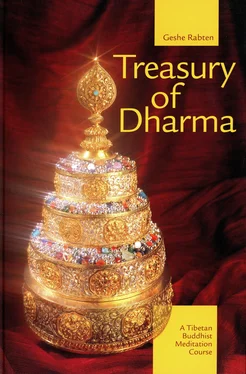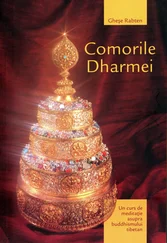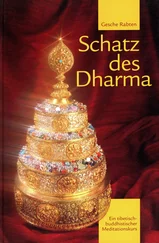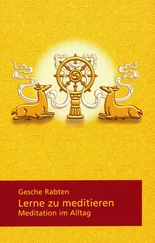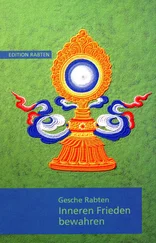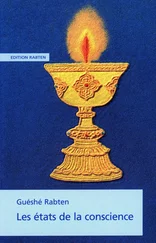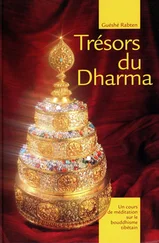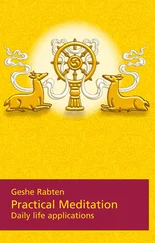Géshé Rabten - Treasury of Dharma
Здесь есть возможность читать онлайн «Géshé Rabten - Treasury of Dharma» — ознакомительный отрывок электронной книги совершенно бесплатно, а после прочтения отрывка купить полную версию. В некоторых случаях можно слушать аудио, скачать через торрент в формате fb2 и присутствует краткое содержание. Жанр: unrecognised, на английском языке. Описание произведения, (предисловие) а так же отзывы посетителей доступны на портале библиотеки ЛибКат.
- Название:Treasury of Dharma
- Автор:
- Жанр:
- Год:неизвестен
- ISBN:нет данных
- Рейтинг книги:3 / 5. Голосов: 1
-
Избранное:Добавить в избранное
- Отзывы:
-
Ваша оценка:
- 60
- 1
- 2
- 3
- 4
- 5
Treasury of Dharma: краткое содержание, описание и аннотация
Предлагаем к чтению аннотацию, описание, краткое содержание или предисловие (зависит от того, что написал сам автор книги «Treasury of Dharma»). Если вы не нашли необходимую информацию о книге — напишите в комментариях, мы постараемся отыскать её.
Treasury of Dharma — читать онлайн ознакомительный отрывок
Ниже представлен текст книги, разбитый по страницам. Система сохранения места последней прочитанной страницы, позволяет с удобством читать онлайн бесплатно книгу «Treasury of Dharma», без необходимости каждый раз заново искать на чём Вы остановились. Поставьте закладку, и сможете в любой момент перейти на страницу, на которой закончили чтение.
Интервал:
Закладка:
We will begin the meditation by visualizing the white channel as being inserted into the red channel at the point four finger-widths below the navel like a small, hollow tube fitting into a larger one. Having clearly imagined these two tubes joined four finger-widths below the navel one should then block the right nostril with the right index finger. We then inhale through the left nostril and visualize the air descending through the left channel. When it reaches the point at which the left channel is inserted into the right channel we then begin to exhale and simultaneously we remove the right index finger from the side of our right nostril and use it to block the left nostril. As we breathe out we visualize this inhaled air passing from the left channel into the right, rising up the right channel and being exhaled through the right nostril. As we do this visualization we imagine that the air flowing through the channels cleanses them of all impurities and that they are left clean and luminous, in much the same way as wind blows away dust. At the time of breathing out we can imagine that our right nostril is somewhat like a factory chimney pouring out the smoke of our impurities.
We should breathe slowly, calmly, and deeply both during the exhalation and inhalation. There is no need to force the breath. Breathe normally and as regularly as possible. At the outset there may be some difficulty because we tend to take shallow breaths, but gradually we shall become accustomed to the practice and our breath will naturally lengthen. We should do this cycle of inhaling through the left nostril and exhaling through the right three times. Imagine with each inhalation and exhalation that the rising air completely cleanses the right hand channel and that it becomes luminous like a channel of very subtle red light.
When we have completed this cycle three times, thereby cleansing the right channel, we should then reverse the process and cleanse the left. (2) We now insert the end of the right, red channel into the white left channel at the point four finger-widths below the navel. We now block the left nostril by applying pressure to the left side of the nose with the left index finger and then slowly and gently inhale through the right nostril. As the breath reaches the point four finger-widths below the navel we then use the same finger to block the right nostril and exhale slowly and gently through the left. We repeat this process three times. While doing so we imagine all the impurities of the left, white channel are expelled with the breath. The channel itself becomes pure and luminous like a radiant tube of subtle, white light. The channels themselves are supple and tender although they remain straight along the spine.
We now visualize a third, blue, channel located between the other two. (3) It also begins at the point four finger-widths below the navel and runs up along and slightly in front of the spinal column. When it reaches the crown of the head it curves like the handle of an umbrella and ends at the point midway between the eyebrows. This third channel is slightly larger than the red and white channels. It is the most important of the channels in our body and we will now purify it in a similar fashion. We visualize the red and white channels entering the blue channel at the point four finger-widths below the navel, again like two tubes fitting into a slightly larger one. While we are meditating we should place our hands in our lap, the right hand facing upward upon the left palm with the two thumbs forming a triangle with the palm. The navel should be level with the space in the middle of the triangle. We inhale and exhale through both nostrils but, in this visualization, we imagine the impurities leaving the central channel at the point between the eyebrows. We repeat this process three times. Having done so we imagine that this channel is completely purified and becomes of the nature of a subtle, radiant, blue light. Having completed this process we should continue to breathe slowly, gently and evenly, imagining our breath flowing freely through all the channels.
If we concentrate on this breathing practice it can be an excellent way to calm the mind and prepare ourselves for further meditation.
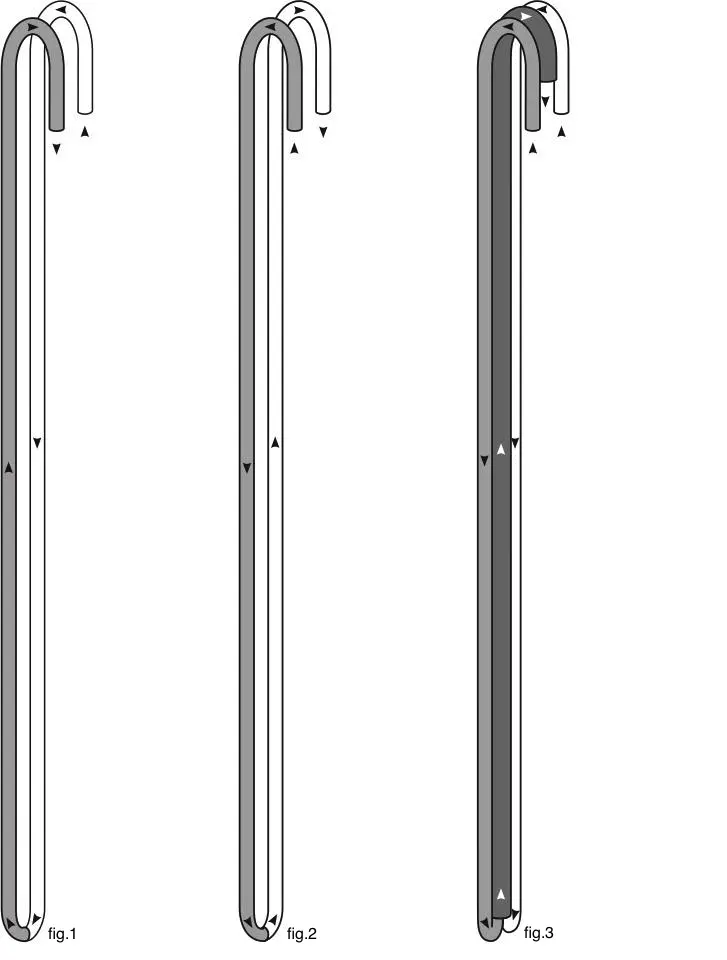
Nine-round breathing meditation
The six stages of breathing meditation
Having seated oneself in the correct posture one then begins to concentrate on the breath. This meditation on awareness of breathing has six divisions: counting, following, placing, investigating, changing, and completion.
1 Counting
Counting refers to the counting of the inhalations and exhalations. As we sit in meditation we breathe slowly in and out. Each cycle of one inhalation and one exhalation is counted as one. We count in this way to ten. At this time the mind should be totally concentrated on breathing. As there are drawbacks in counting either more or less than ten we will count to ten. While we are counting we should remain aware that now we are breathing in, now we are breathing out, and so on. If we breathe in while thinking that we are breathing out it will defeat our purpose! We must remain mindful of the cycle of breathing. If one does this exercise but allows the mind to wander it will be of no benefit. In the beginning we should breathe in a gentle, natural way. Eventually, our breath will become longer and deeper as a result of this practice. The mind must follow the process of breathing attentively, thinking of nothing else. Do not try artificially to lengthen the breath. When one is able to count ten inhalations and exhalations without allowing the mind to wander and when the length of the breathing has increased as a result of the practice, the first stage of awareness of breathing will be completed. Only then should one move on to the second stage.
2 Following
The second stage refers to following the breathing. At first, with our mental awareness, we will follow our inhalation until it reaches the level of the neck and then, as we exhale, we will follow the breath to a point just beyond the nostrils in the space in front of us. When we can do this quite easily we then begin to follow the inhalation a little further down the windpipe to the level of the chest, and likewise, the equivalent distance out of the nostrils. Having become adept at this, we then follow the breathing to the level of the knees, and again, the same distance out of the nostrils. It may be easier for some of you to visualize the air passing through the channels as being like a thin line of incense smoke. If this is done, it is important to remember that the breath itself has neither form nor colour and that this is only an aid to the visualization. Continuing in the same way, you should then visualize the breath going to the level of the feet and then out of the nostrils the corresponding distance.
Although I am explaining this quite quickly, when you are meditating you should proceed in a slow and gradual manner, first mastering each step before going on to the next. Each successive stage will take a great deal of time. It is like building a house; one cannot do it in one day. It is done brick by brick. But if the work goes on day after day the house is eventually built. This meditation is similar. We must do a little each day and will progress as a result of our continuous effort. As the meditator continues in this practice he visualizes the breath being inhaled out beyond his feet and likewise exhaled a corresponding distance from the nostrils. When this second stage of breathing awareness has been perfected, the meditator is able to follow his respiratory cycle beyond the end of the feet without the mind wandering at all. Only then can the meditator proceed to the next stage.
Читать дальшеИнтервал:
Закладка:
Похожие книги на «Treasury of Dharma»
Представляем Вашему вниманию похожие книги на «Treasury of Dharma» списком для выбора. Мы отобрали схожую по названию и смыслу литературу в надежде предоставить читателям больше вариантов отыскать новые, интересные, ещё непрочитанные произведения.
Обсуждение, отзывы о книге «Treasury of Dharma» и просто собственные мнения читателей. Оставьте ваши комментарии, напишите, что Вы думаете о произведении, его смысле или главных героях. Укажите что конкретно понравилось, а что нет, и почему Вы так считаете.
